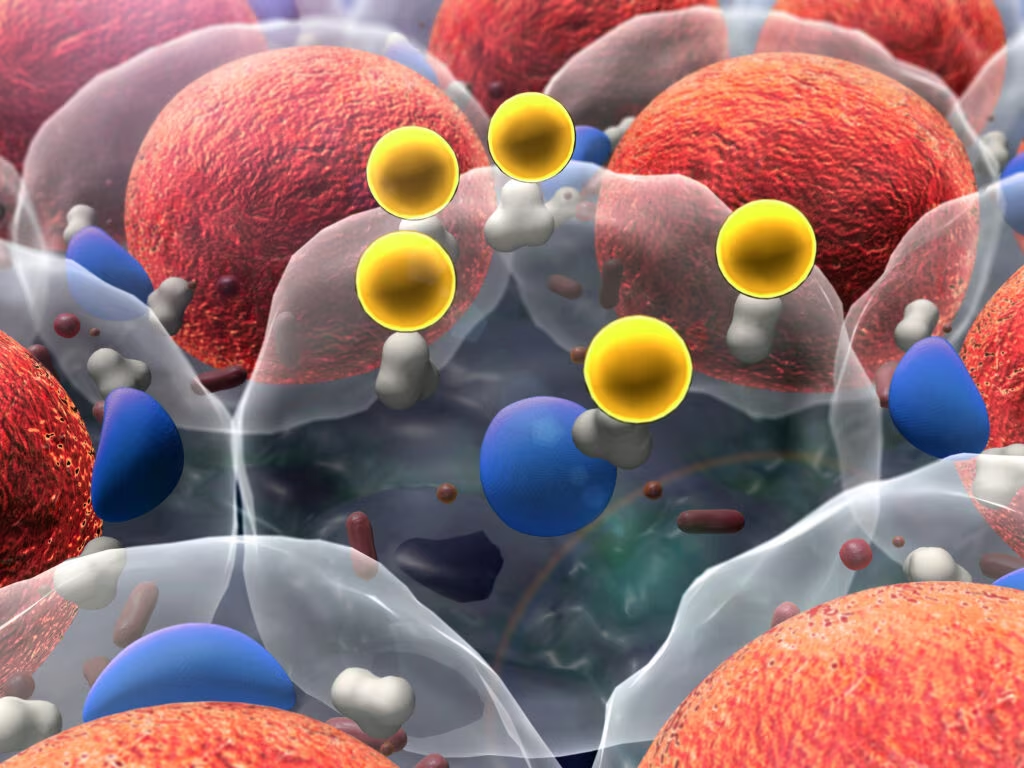Search Results
Showing Results for pasireotide

Cushing’s disease (CD) is caused by an adrenocorticotropic hormone (ACTH)-secreting pituitary adenoma, or rarely carcinoma, and is considered a highly morbid endocrine disorder with few medical options.1,2 Although transsphenoidal pituitary surgery (TSS) is the mainstay of treatment for ...

Acromegaly is a chronic disease caused by an excess of growth hormone (GH) and insulin-like growth factor 1 (IGF-1).1,2 Besides facial and acral changes, systemic complications lead to decreased quality of life and survival rates.3 The primary goal of acromegaly treatment ...

Cushing’s disease (CD), or pituitary-dependent Cushing’s syndrome, is almost always caused by corticotroph tumours, a type of pituitary neuroendocrine tumour, which overproduces adrenocorticotrophic hormone (ACTH), ultimately leading to hypercortisolism and its associated clinical consequences, including increased mortality.1 The ...

Acromegaly is the clinical consequence of chronic excessive exposure of the tissues to growth hormone (GH) and its second messenger, insulin-like growth factor-I (IGF-I). The excess GH secretion is almost exclusively secondary to a GH-secreting pituitary adenoma (somatotropinomas); however, excess ...

Hypertension affects up to 40% of the adult population worldwide,1 and according to the World Health Organization’s 2021 estimates, globally 1.28 billion adults between 18 and 79 years are affected.2 Of these, 85% have essential hypertension3 and the remainder have secondary hypertension, which is potentially ...

Acromegaly is a chronic, progressive disease characterized by an excess secretion of growth hormone, and consequently, increased circulating insulin-like growth factor 1 (IGF-1) levels. These patients typically exhibit acral and soft tissue overgrowth, headache, arthritis and visual disturbances. Impaired glucose tolerance ...

The pituitary gland, or hypophysis, is the ‘master gland’ that secretes multiple hormones which regulate the functioning of other endocrine organs, such as the thyroid, adrenal cortex and gonads. Though none of the major pituitary hormones directly control the endocrine ...

Pituitary adenomas are benign tumours that arise from the adenohypophysis. They are the second most frequent intracranial tumour type after meningiomas, and account for 16.2% of all primary cranial neoplasms.1 Though likely an underestimate, the incidence of pituitary adenomas is approximately ...

Acromegaly is a chronic disorder characterised by growth hormone (GH) hypersecretion, predominantly caused by a pituitary adenoma.1 Disease prevalence ranges from 2.8–13.7 cases and annual incidence is between 0.2–1.1 cases/100,000 people; however, real incidence is likely much higher.2,3 Average age at diagnosis ...

Neuroendocrine tumours (NETs) represent a heterogeneous group of neoplasms that originate from different types of neuroendocrine cells throughout the body.1 While previously considered to be relatively uncommon, their overall incidence has been reported as increasing for reasons which are unclear.2–4 ...

In 1932, Dr Harvey Cushing published his findings on a series of patients with what he called the “killing disease,” revealing that the median survival for most of his patients was less than 5 years from diagnosis.1 With advances in surgical techniques ...

Neuroendocrine tumours (NETs) represent a heterogeneous group of neoplasms that originate from different types of neuroendocrine cells throughout the body.1 While previously considered to be relatively uncommon, their overall incidence has been reported as increasing for reasons which are unclear.2–4 ...

In 1932, Dr Harvey Cushing published his findings on a series of patients with what he called the “killing disease,” revealing that the median survival for most of his patients was less than 5 years from diagnosis.1 With advances in surgical techniques ...

Thyroid cancer is the most common endocrine malignancy, being responsible for approximately 95 % of endocrine cases and 1.5 % of all cancers.1 Its incidence has increased substantially in recent decades and has been rising by 6.4 % per year over the past 10 years.1 This is ...

Acromegaly Epidemiology and Clinical Manifestations Acromegaly Epidemiology and Clinical Manifestations Acromegaly is an uncommon disorder characterised by the hypersecretion of growth hormone (GH) resulting in an increase in serum insulin-like growth factor-1 (IGF-1) levels. This condition is most often caused ...

Acromegaly Epidemiology and Clinical Manifestations Acromegaly Epidemiology and Clinical Manifestations Acromegaly is an uncommon disorder characterized by the hypersecretion of growth hormone (GH) resulting in an increase in serum insulin-like growth factor-1 (IGF-1) levels. This condition is most often caused ...

Cushing’s disease is caused by a pituitary adenoma that secretes elevated levels of adrenocorticotropic hormone (ACTH), which stimulates the adrenal glands to produce excess cortisol.1 The tumours are most frequently microadenomas (≤1 cm in diameter) while corticotroph macroadenomas are responsible ...

Active acromegaly is associated with a two- to three-fold increase in mortality that can be reduced to that of the background population with effective treatment to decrease growth hormone (GH) and insulin-like growth factor-I (IGF-I) levels to within normal limits. ...
Latest articles videos and clinical updates - straight to your inbox
Log into your Touch Account
Earn and track your CME credits on the go, save articles for later, and follow the latest congress coverage.
Register now for FREE Access
Register for free to hear about the latest expert-led education, peer-reviewed articles, conference highlights, and innovative CME activities.
Sign up with an Email
Or use a Social Account.
This Functionality is for
Members Only
Explore the latest in medical education and stay current in your field. Create a free account to track your learning.

